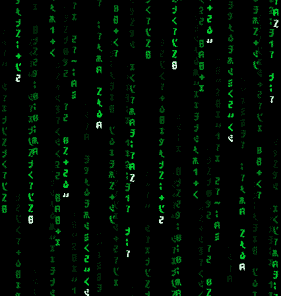
This bit was very tricky, since every function requires a different setup. Here’s an example of how a simple typing program might work for English (command prompt?). Each letter and grammar symbol is assigned a 2 digit hexadecimal code. When a key is hit, the signal is an address for the destination in the RAM containing the bit of the program with the pixel combination for that symbol. Two beams of light are always on, blocking the “exit” for the coordinate code in the RAM by keeping a pair of consecutive crystals opaque, thus the signal just refreshes in the RAM. The address signal can be filtered (with tinted lenses) so that all of it reaches the destination, this turns 2 crystals opaque which blocks the two beams keeping the coordinate signal in the RAM, ‘releasing’ it.

The coordinate signal then reaches the part of the RAM holding the pixel coordinates on the screen. It then deletes the portion where it should be appearing, and inserts itself, effectively overwriting itself on the screen. The coordinate signal does this by first blocking the suspended information in the RAM from refreshing by turning a crystal opaque, then simply interring that bit of the RAM. Any bits of code that have multiple actions are stored in the CPU cache, so that it can complete its work in the next calculation cycle. All the RAM does to store the signal in crystals is, reverse the signal twice, so that the signal remains the same, but this requires the activation of crystals, so the information is stored in crystals.